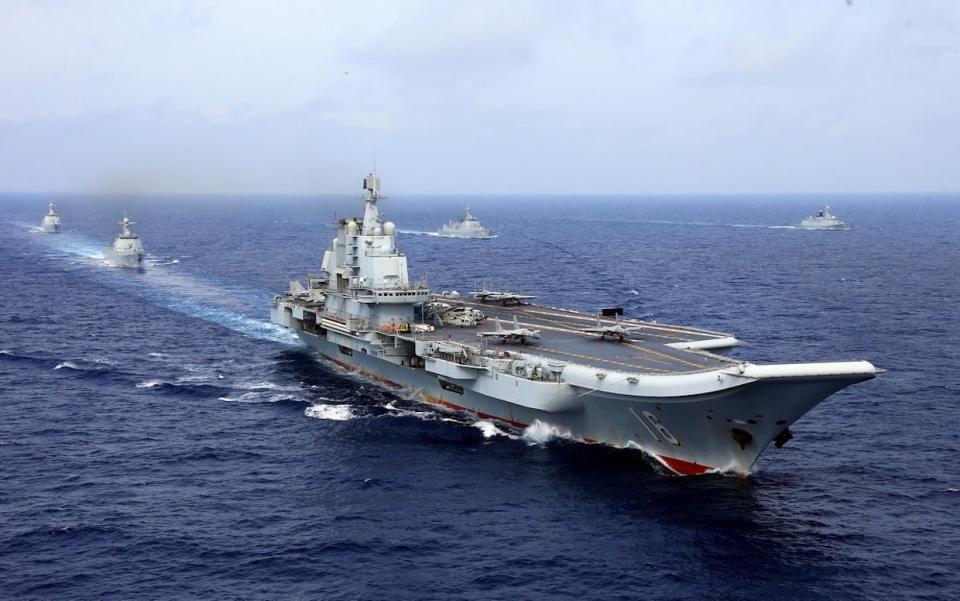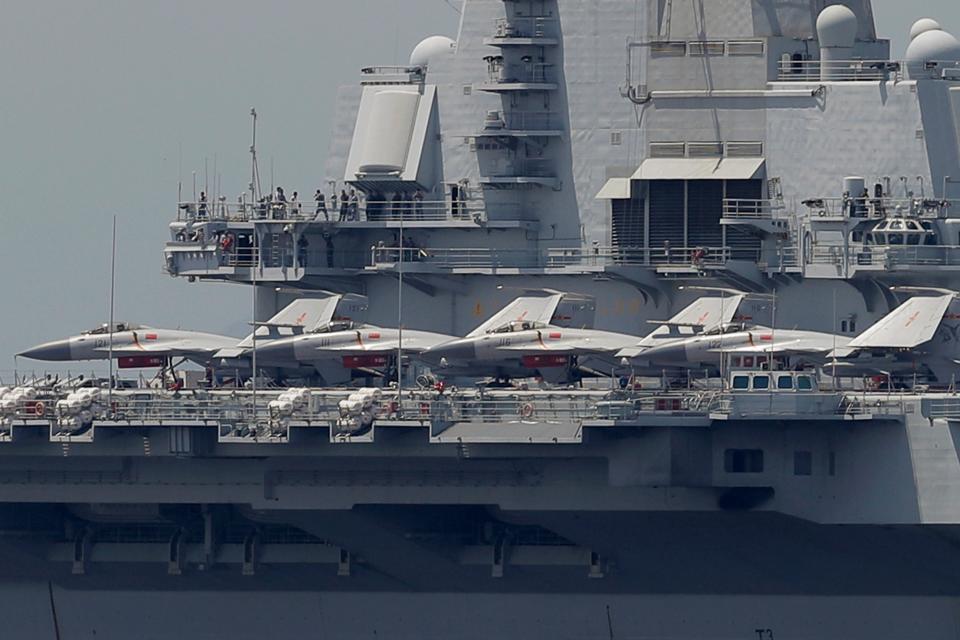China is working on a next-generation fighter jet for its growing fleet of aircraft carriers and could unveil it this year
China is working on a next-generation fighter jet for its growing aircraft carrier fleet.
The chief designer of the current carrier-based fighter said this week the new jet could be revealed this year.
There has long been speculation about what China's next-generation aircraft will look like.
China is working on a next-generation carrier-based fighter jet, and the aircraft could be unveiled this year, the chief designer of the country's current carrier-borne fighter said this week at the Zhuhai airshow, Chinese media reported.
"As soon as it is ready, you will get to see it. Don't worry. Just wait. It will be here soon," Sun Cong, the chief designer of the J-15 carrier-based fighter that arms China's first two carriers, Liaoning and Shandong, told reporters at a press conference Wednesday.
"Probably this year, before the end of the year, you will be able to see it," he said in a video clip from the briefing posted on state-run broadcaster CCTV's national defense and military news Weibo channel.
The state-owned Aviation Industry Corporation of China shared the video on social media with a short note suggesting the aircraft will be unveiled within the year. China's current carrier fighter is capable, but there has long been speculation that the Chinese navy will adopt a fifth-generation fighter to match the ambition shown in its carrier fleet build-up.

The Chinese People's Liberation Army Navy (PLAN) has two conventional carriers - the Liaoning and Shandong. The first ship was built from the refitted hull of an older Soviet vessel, and the other is essentially a Chinese-built copy of the first, with some upgrades and improvements.
A third carrier, a still unnamed vessel known simply as Type 003, is in the works and is expected to "significantly upgrade China's naval capabilities," according to an analysis of satellite imagery of the ship by three experts at the Center for Strategic and International Studies.
-@Rupprecht_A (@RupprechtDeino) June 6, 2021
"When the Type 003 eventually enters service, it will be a formidable addition to China's navy and allow it to more effectively project power,"they wrote in June as images showed the carrier coming together at Jiangnan Shipyard in Shanghai.
The new aircraft carrier will likely feature catapults for launching a wider variety of planes more efficiently and effectively than the ramp system on its predecessors. It will also have a larger flight deck than the other two ships and likely a number of other improvements. This new ship is expected to be China's first modern aircraft carrier.
The ships are apparently not the only place where China is hoping to make a significant technological leap forward.

Just as its first two carriers were based off Soviet carrier designs reflected in ships like Russia's sole carrier, the Admiral Kuznetsov, the J-15 is said to be based on an incomplete prototype of the Russian Sukhoi Su-33 carrier-based air superiority fighter.
This fourth-generation aircraft is generally considered to be capable, but a fifth-generation fighter, typically defined in part by stealth capabilities, would offer a potential boost to China's ability to project power with its carrier force.
As Chinese media highlighted this week, there has been a lot of speculation that China's next carrier-based fighter could be based on the fifth-generation J-31 (FC-31), a stealthy aircraft that first flew in 2012 and was originally marketed for export before the project was overhauled.
Speculation was fueled this past June when images surfaced on social media showing what appeared to be a stealthy fighter jet, one similar in design to the FC-31, on a mock land-based carrier in Wuhan.
-@Rupprecht_A (@RupprechtDeino) June 8, 2021
The Chinese PLAN is the largest navy in the world, according to the US Department of Defense. But the US Navy, China's biggest rival in the maritime domain, possesses the more powerful force and the largest carrier force, with 11 nuclear-powered flattops.
The US carrier force consists almost entirely of Nimitz-class aircraft carriers, but the Navy is building a new class of carriers known as the Ford-class, the first of which is expected to deploy next year.
In addition to the work on a new class of aircraft carriers, which are equipped with a suite of new technologies, the US Navy has also begun fielding carrier-based fifth-generation F-35C Lightning II Joint Strike Fighters on its ships.
The first US aircraft carrier to deploy with F-35s departed San Diego in August and sailed through the South China Sea this month.
Read the original article on Business Insider

